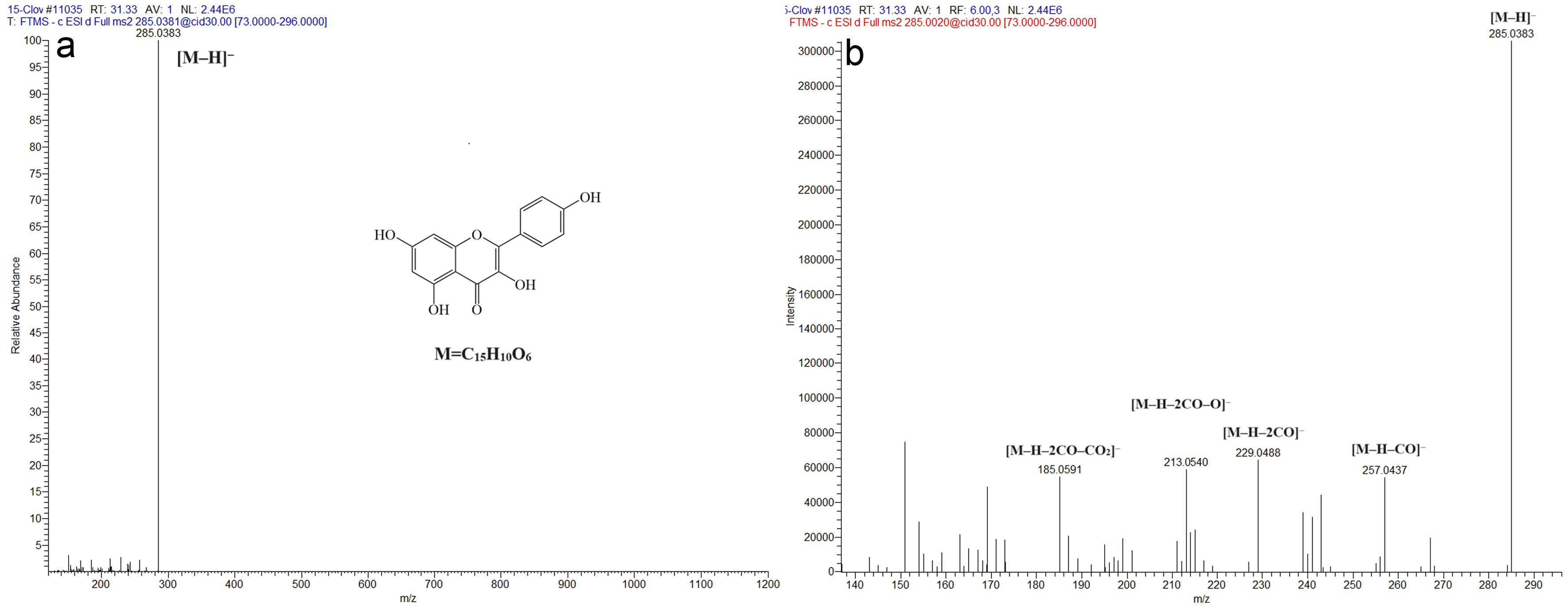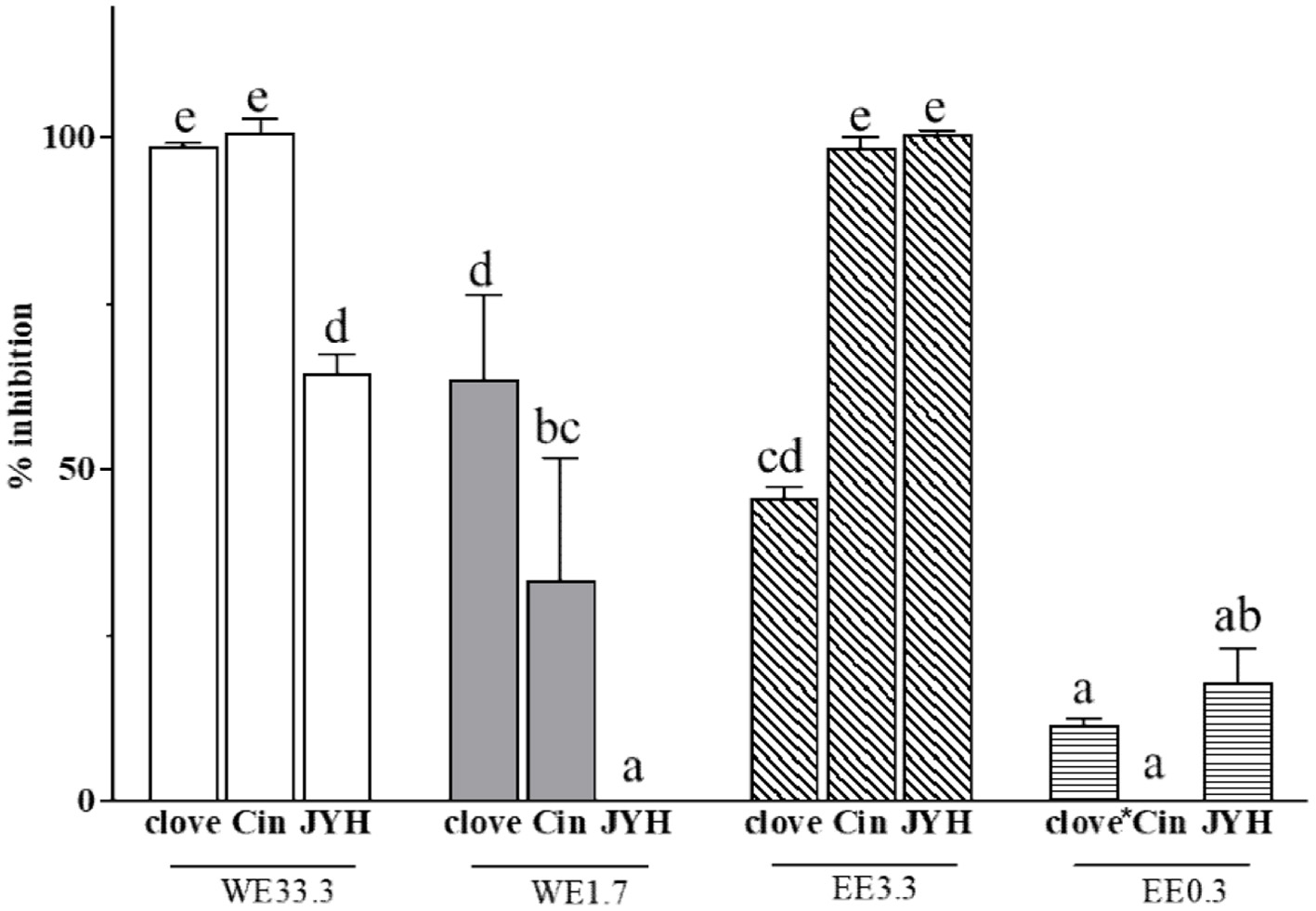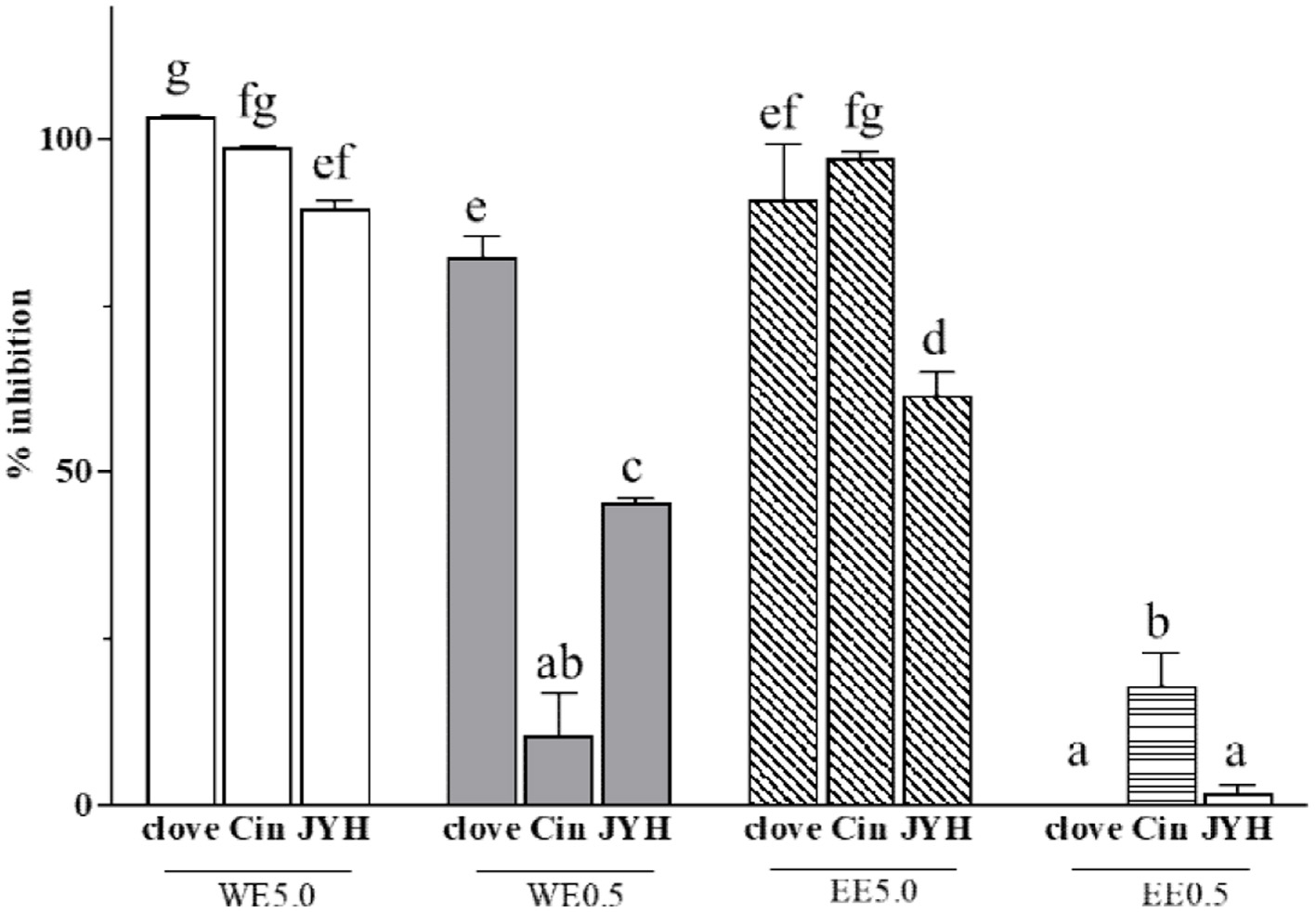Figures

Figure 1. Edible botanical approaches to reducing the risk of COVID-19. Several biological mechanisms of COVID-19 infection and symptom exacerbation may be amenable to modification by edible botanicals, including: (1) prevention of SARS-CoV-2 and ACE2 binding, (2) ACE2 inhibition, (3) modulation of inflammatory response by phenolic compounds, (4) reduction of oxidative stress through free radical scavenging, and (5) overall support of appropriate immune function.

Figure 2. Identification of kaempferol (C15H10O6) in clove extract. (a) Full scan MS and (b) MS2 in negative ion mode.

Figure 3. Inhibitory effects of clove, cinnamon (Cin) and honeysuckle (JYH) water (WE) and ethanol extracts (EE) at different concentrations on the binding interaction between SARS-CoV-2 spike protein and ACE2. WE33.3 and WE1.7 stand for the initial water extract concentrations of 33.3 and 1.7 mg dry botanical equivalents/mL in the testing mixture, respectively; whereas EE3.3 and EE0.3 stand for the initial ethanol extract concentrations of 3.3 and 0.3 mg dry botanical equivalents/mL in the testing mixture, respectively. Values are mean ± standard deviation (SD) of triplicate experiments. *clove was tested at 0.8 mg dry botanical equivalents/mL in the testing mixture. Different letters indicate significant difference (p < 0.05) by ANOVA. This figure was prepared using the data published previously (Li et al., 2022; Xie et al., 2023; Gao et al., 2023).

Figure 4. Inhibitory effects of clove, cinnamon (Cin) and honeysuckle (JYH) water (WE) and ethanol extracts (EE) at different concentrations on ACE2 activity. WE5.0 and WE0.5 stand for the water extract concentrations of 5.0 and 0.5 mg dry botanical equivalents/mL in the testing mixture, respectively; and EE5.0 and EE0.5 stand for the ethanol extract concentrations of 5.0 and 0.5 mg dry botanical equivalents/mL in the testing mixture, respectively. Values are mean ± standard deviation (SD) of triplicate experiments. Different letters indicate significant difference (p < 0.05) by ANOVA. This figure was prepared using the data published previously (Li et al., 2022; Xie et al., 2023; Gao et al., 2023).

Figure 5. (a) Total phenolic content and relative free radical scavenging activities of clove, cinnamon (Cin) and honeysuckle (JYH) water (WE) and ethanol extracts (EE) against (b) HO•, (c) DPPH• and (d) ABTS•+. Values are reported as mean ± SD of experiments performed in triplicate on a per dry botanical weight basis. Different letters indicate significant difference (p < 0.05) by ANOVA. This figure was prepared using the data published previously (Li et al., 2022; Xie et al., 2023; Gao et al., 2023).




